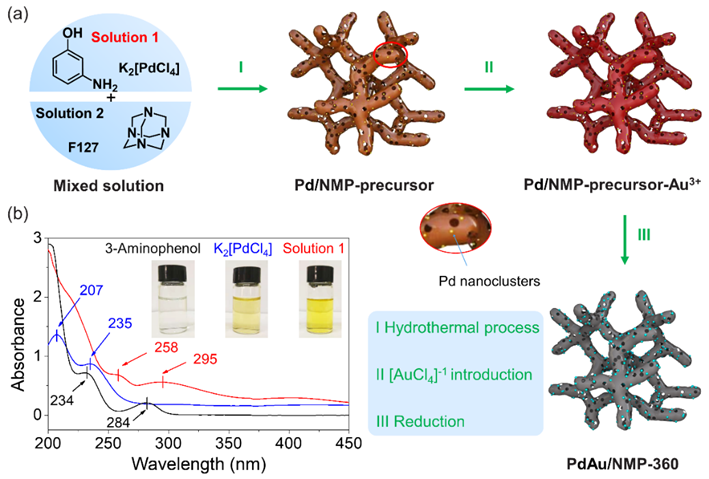Supported bimetallic catalysts have become an important class of catalysts in heterogeneous catalysis, which are widely used in various application fields, including electrocatalysis, biomass conversion, hydrogen production and many other catalytic processes. However, the supported bimetallic catalysts prepared by the traditional method (such as impregnation) often suffer from the drawback that the bimetallic nanoparticles (BNPs) are often less controllable with a large average size, broad size distribution and inhomogeneous alloying, leading to poor catalytic performance and low metal utilization. To well control the size and composition of the supported BNPs, colloidal synthesis has been involved in the synthesis processes. However, deposition of the formed metal nanoparticles onto porous supports is very challenging, often resulting in inhomogeneous distributions with metal nanoparticles aggregated in some areas of the supports, while other areas still remaining empty. Therefore, the development of universal strategies for supported bimetallic catalysts, where the well-defined BNPs are uniformly dispersed on the porous supports, is highly desirable.

Schematic illustration for the synthesis of supported PdAu BNPs by a nanoreactor strategy. (Image by Tian Zhengbin)
Recently, our group in collaboration with Prof. WANG Guang-Hui and Prof. JIANG Heqing from Qingdao Institute of Bioenergy and Bioprocess Technology (QIBEBT) of Chinese Academy of Sciences, developed a universal nanoreactor strategy for scalable synthesis of supported ultrafine bimetallic nanoparticles. This strategy is based on coordination chemistry to introduce the high-quality seeds of Pd nanoclusters and the Au ions into the nitrogen-doped mesoporous polymer (NMP), and thus to be used as a nanoreactor for seeded growth of PdAu BNPs in solid-state during thermal reduction. Many other supported Pd-based BNPs have also been successfully synthesized by adoption of this strategy, including PdRu, PdCo, PdNi, PdZn, PdAg and PdCu BNPs. As an example, the as-synthesized Pd1Au1/4 sample shows enhanced catalytic performance in formic acid (FA) dehydrogenation compared with the monometallic analogs, indicating the synergistic effect between Pd and Au. It is believed that the nanoreactor strategy provides an effective route to synthesize various supported bimetallic catalysts that have potential for applications in green and sustainable catalytic processes.
This work was published on Materials today (DOI: 10.1016/j.mattod.2020.05.017), and support by National Natural Science Foundation of China (21872159), QIBEBT (ZZBS201802) and the DNL Cooperation Fund, CAS (DNL180402)